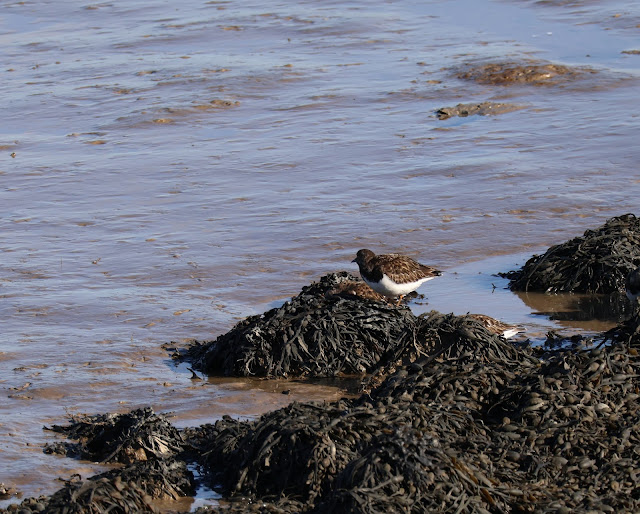It was a pleasant sunny day for my visit to Oare Marshes on the north coast of Kent. The reserve lies on the edge of the Swale estuary and is owned by the Kent Ornithological Trust and is a nice sized reserve for a morning's walk. There are a three hides, and as usual, I hoped to be able to use the opportunity to add a few more species to my year list.
Driving up the access road, I soon realised that the main lake, where there are usually plenty of birds to be seen especially at high tide, had been taken over by a work party, obviously preparing the site for the nesting season. About a dozen people, armed with noisy strimmers and such like, were spread across the area, and were obviously burning the waste in two bonfires! No wonder the area was almost bereft of birds!!
However, there still seemed quite a few 'birders' about, and I found a space to park on the edge of the road between two cars. I walked up to the seawall and climbed the steps to see over to the estuary. The tide was coming in and it would only be about an hour until the mud was covered in sea water. A few curlew and oyster catchers were feeding on the mud and further along, I could make out a group of smaller birds on some seaweed covered rocks. Walking towards them I could see a group of about 14 turnstones, busily poking amongst the seaweed looking for food. They were well disguised, their bright orange legs making a splash of contrast amongst the rocks.
I watched them for a while, as the tide came nearer, a group of avocets flew in , before taking off again shortly after. I walked on a bit but the sea was already covering much of the mud, and the path along the seawall was muddy too. I decided against following it as it just led round to the area being worked on.
Re-tracing my steps, I noticed the flock of turnstones had been pushed closer up onto the rocks below the seawall, remaining active as they jumped from rock to rock. I left them to it, and continued walking beyond the slipway, following the path up the estuary. There were a few tufted ducks and greylag geese and a little egret, but I saw nothing else of note in this area.
Meanwhile the turnstones had relocated to the end of the slipway and as I walked back toward them, they took off and landed on some rocks just below were I was standing, allowing me some close views. Finally they flew back to an old boat moored in the river, as if they meant to wait there until the tide receded.
Having done justice to the turnstones, I walked back down the road to view the lake which was now quiet again. A couple of mute swans were preening, and on an island I spotted a spoonbill. Apart from a few gulls in the distance, they appeared to be the only birds there. though doubtless many more would return to roost in the evening.













.JPG)

No comments:
Post a Comment